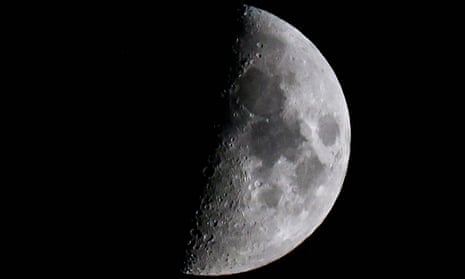Nasa has revealed it is looking forward to seeing an Australian flag on the moon.
The disclosure was made by Pam Melroy, who was integral to establishing the Australian Space Agency and is one of only two women to captain the space shuttle. She was sworn in to her new role of Nasa deputy administrator in June, and on Wednesday beamed in to the Australian Space Forum hosted by the Andy Thomas Space Foundation in Adelaide.
She outlined Nasa’s plans to go to the moon and said it was a mission for “Spaceship Earth”.
“We are not planning to do this alone. We think it’s incredibly important to go together,” she said.
“It was so important that Australia was one of the initial signatories of the Artemis Accords. Signing the Artemis Accords automatically put Australia at the forefront of global leadership and I am so proud that we partnered with Australia.”
The accords are new international agreements governing space exploration, and exist in addition to the Outer Space Treaty. Australia signed up a year ago and the partnership means Australian companies will be involved in the Moon to Mars initiative.
“As we look at this rich tapestry of capabilities that we’ve put together, I look forward to partnering with Australia, to see which parts of it, which elements Australia wants to take complete ownership of,” Melroy said.
“I look forward to seeing an Australian flag on the moon in the not-too-distant future.”
Earlier this year China became the second nation (after the United States) to plant a flag on the celestial body. After the Apollo 11 mission planted the first flag (with a horizontal pole to stop it drooping) the US planted five more.
Also at the forum, Nasa astronaut Shannon Walker spoke about her recent stint on the International Space Station, with long days full of science experiments, exercise, and the occasional break to watch a movie or look out at Earth from the ISS’s cupola.
Walker also has close ties to Australia – she is married to Australian astronaut Andy Thomas and pre-pandemic they visited often from Texas. Thomas has previously spoken about the possibility of having “Aussienauts” on future space missions.
She spoke about the role of space exploration in furthering science, and how the Artemis mission to put the first woman on the moon will inspire girls and young women to study STEM (science, technology, engineering and maths) subjects.
On her orbital travels, she took a stuffed kangaroo called Purra. Purra, a present from the Australian Space Agency, is named for a red kangaroo that features in an Aboriginal astronomy story that is significant for the Boorong people in Victoria.
And Kaurna leader Jack Buckskin crafted a boomerang that was sent up to her on a Tesla Falcon 9 rocket.
“Hopefully soon the pandemic will allow me to bring it back to Australia and give it back to the people there,” Walker said.
